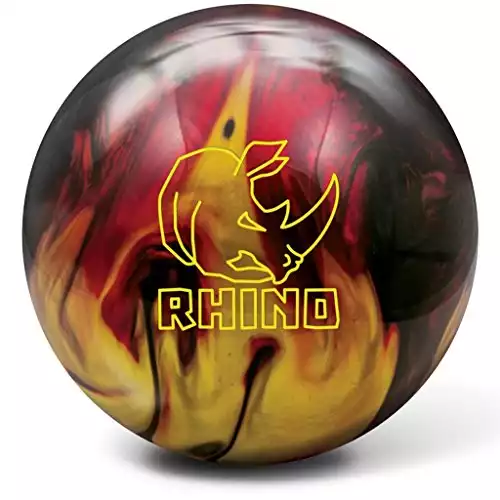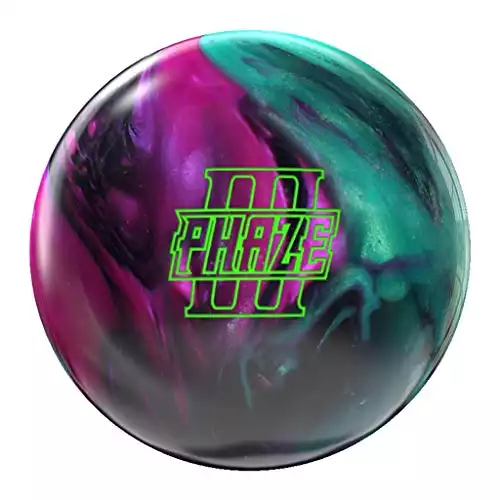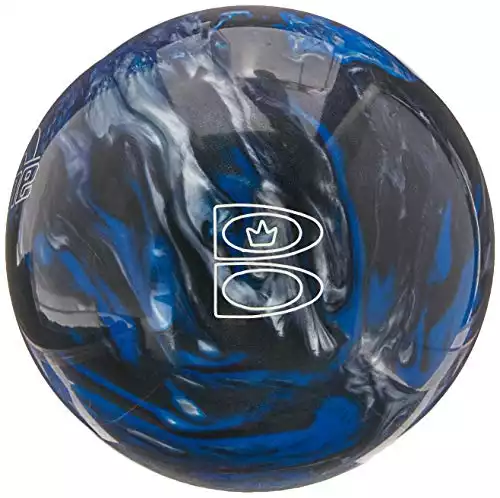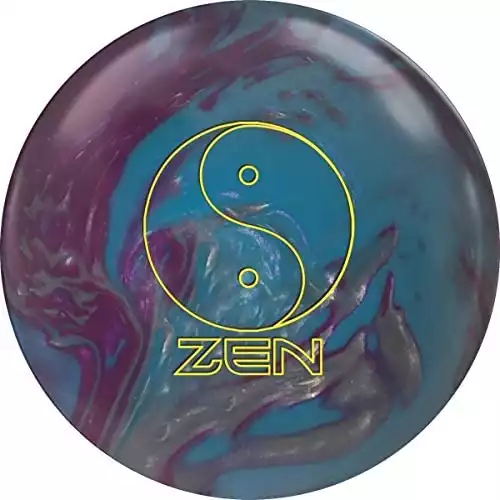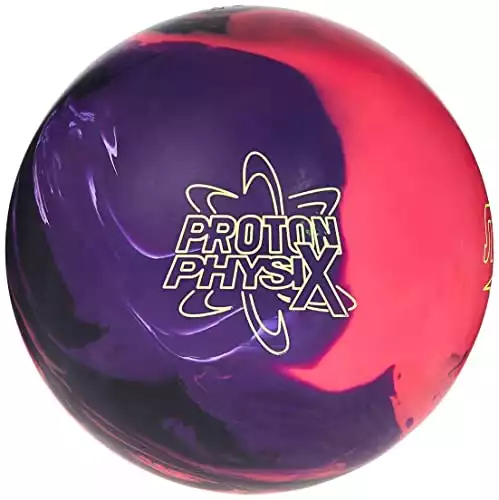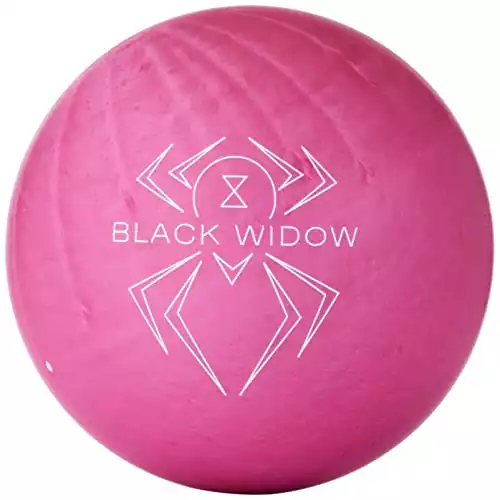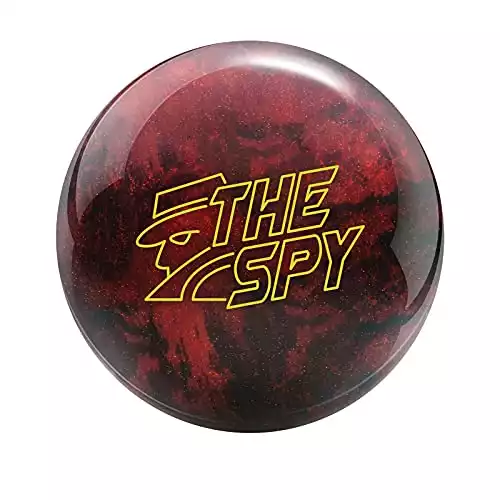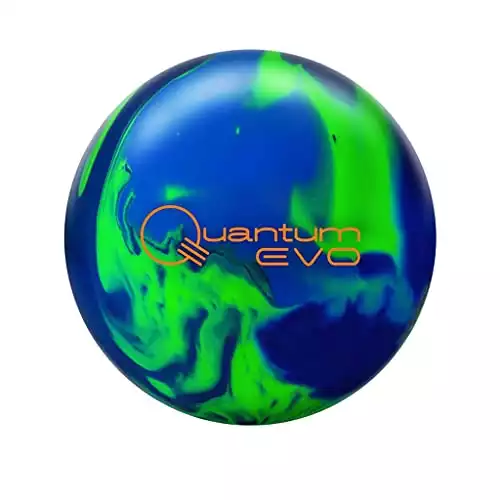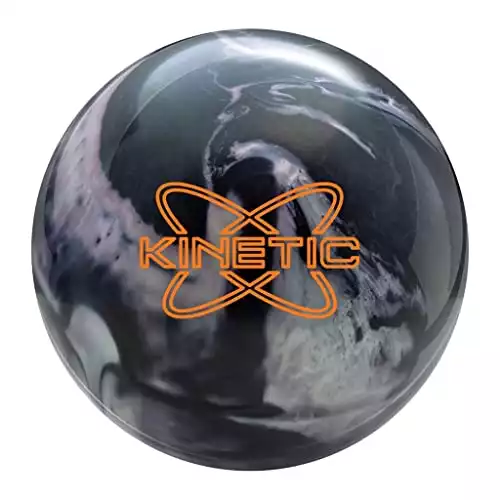
New bowlers walk up to the bowling ball racks, choose a ball weight and color they like, and then play their game. But what most don’t know is that there are many more things to consider before choosing a bowling ball, and the core is one of the most important. Two of the main bowling ball core types are symmetrical and asymmetrical.
If you want to learn more about each of them, we can help. In this article, we’ll give you the rundown on symmetrical and asymmetrical bowling balls so you’ll know which one to choose and how it can impact your game.
Contents
- 1 Symmetrical vs. Asymmetrical Bowling Balls
- 2 What Is a Symmetrical Bowling Ball?
- 3 What Is an Asymmetrical Bowling Ball?
- 4 What’s the Difference Between a Symmetrical and Asymmetrical Bowling Ball?
- 5 When to Use a Symmetrical Bowling Ball
- 6 When to Use an Asymmetrical Bowling Ball
- 7 A Misconception About Symmetrical Bowling Balls
- 8 Do Asymmetrical Bowling Balls Cost More?
- 9 Other Things to Consider When Choosing a Bowling Ball
- 10 Where to Buy Bowling Balls
- 11 Top Five Symmetrical Balls
- 12 Top Five Asymmetrical Balls
- 13 Do You Need to Get Your Symmetrical or Asymmetrical Ball Drilled?
- 14 Could You Use Both Symmetrical and Asymmetrical Bowling Balls?
- 15 When to Seek Help With Ball Selection
- 16 Your Ball Won’t Instantly Make You a Pro
Symmetrical vs. Asymmetrical Bowling Balls
Bowling Ball Core
A bowling ball core is the innermost part of the ball. Its main purpose is to provide weight and balance to the ball. The size, shape, and weight of the core all affect the performance of the ball.
You’ll need to know this in order to understand the rest of the article.
What Is a Symmetrical Bowling Ball?
If you've bowled with a house bowling ball, more than likely, you bowled with a symmetrical bowling ball. What makes a bowling ball symmetrical? The core.
A symmetrical bowling ball's core is identical when split in half. The weight of the ball is evenly distributed on both sides, making it easier to control. The symmetrical shape also allows for more consistent results when bowling and predictable ball reaction.
Here’s what you can expect if you bowl using a symmetrical bowling ball:
- This ball gives the player a smooth and more calculable motion post-release.
- A symmetrical core works best for players who throw slower, less aggressive balls. This ensures more predictable ball behavior.
A symmetrical ball's predictability and uniform balance might sound appealing, but there are times when a bowler might feel that an asymmetrical ball would perform better. Certain lane conditions and bowling styles can impact whether a symmetrical ball would be the best choice for you.

What Is an Asymmetrical Bowling Ball?
Simply put, when bowling balls have asymmetrical cores, it means the inside of the bowling ball is heavier on one side than the other. The core weight is not even like it is in symmetrical bowling balls. The asymmetrical core type imbalance is what helps the bowling ball hook.
Traditionally, these balls are used by players who put a lot of power behind their throws. The speed can reduce the ball’s rev rate (and resulting hook), and asymmetrical balls can help with that issue.
Here’s what you can expect if you use an asymmetrical bowling ball:
- The ball tends to be more reactive with sharper movements.
- Speed bowlers may find asymmetrical balls better for their game, especially if they prefer hook shots.
While the thought of using an asymmetrical bowling ball might sound too unpredictable, many players find that they actually have more control. So, if you’re bowling with a symmetrical bowling ball and having problems getting it to perform the way you’d like, it might be time to try an asymmetrical ball.
What’s the Difference Between a Symmetrical and Asymmetrical Bowling Ball?
The difference between symmetrical and asymmetrical balls can appear complicated. So, we’ll give you a simplified explanation here:
Symmetrical bowling ball cores have the same weight distribution on both sides of the ball. Think 50-50, split evenly down the middle. While asymmetric bowling balls have a mismatched weight distribution. Think 70-30, creating lopsidedness or lean in the roll. This core weight distribution difference makes asymmetrical balls roll differently than symmetrical balls. In addition, asymmetrical balls have three core specifications, RG, differential and intermediate differential)
When to Use a Symmetrical Bowling Ball
Is a symmetrical bowling ball for you? Symmetrical bowling balls are best suited to people who prefer straight shots. The symmetrical core will help to ensure that the ball doesn’t go off course very easily. Most of the bowling balls at your local bowling alley are symmetrical balls, so most people have experience with this ball type.
If you’re a beginner, we recommend starting with a symmetrical bowling ball, as they are relatively easy to control.
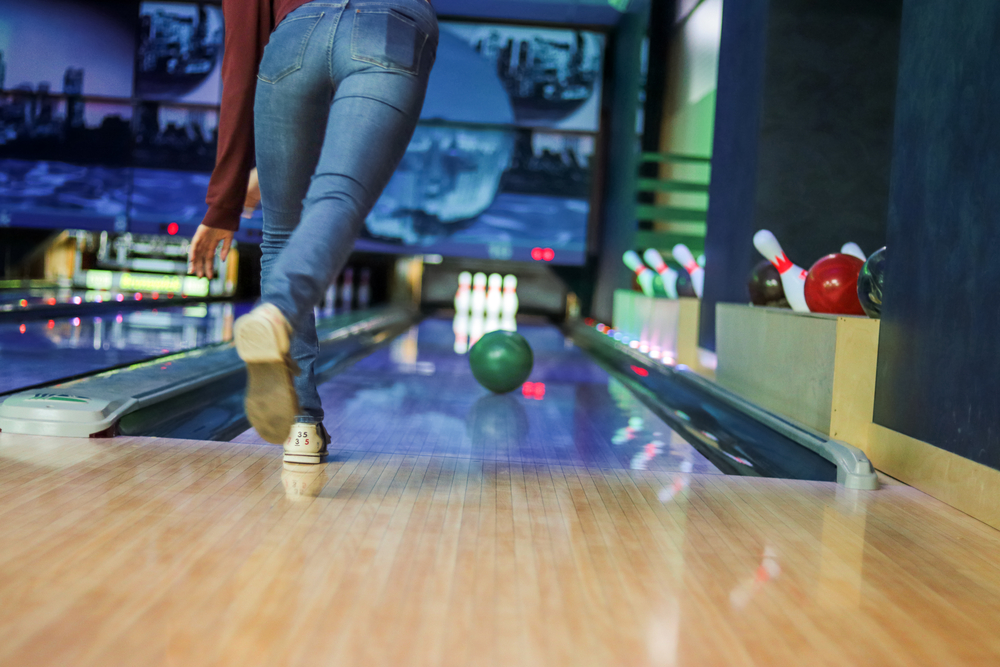
When to Use an Asymmetrical Bowling Ball
The thought of using a bowling ball that isn’t symmetrically balanced can be off-putting to some, but it works for many bowlers. Most bowlers using an asymmetric ball tend to throw higher ball speed and with stronger spins.
Asymmetrical balls are also used when a bowler is playing on heavily oiled patterns. These lanes don’t provide enough friction, affecting ball motion, and give players a better chance of getting traction and achieving a strong backend hook.

A Misconception About Symmetrical Bowling Balls
Some people think that symmetrical bowling balls don’t hook because of their balanced core. But that couldn’t be further from the truth. While symmetrical cores are not built for major hooks, when paired with certain overstocks, symmetrical bowling balls can hook.
But it’s important to know that symmetrical balls will not hook as much as asymmetrical balls that have similar specs. It’s important to understand that before proceeding further.

Do Asymmetrical Bowling Balls Cost More?
Asymmetrical bowling balls tend to cost more than symmetrical bowling balls. The reason for this is that more research goes into the ball construction process and design, giving certain bowlers a higher chance of scoring big.
Though that's the case, the cost difference between the two isn't usually significant. And there are so many other things that can alter the price of a ball (which we'll touch on in the following section).
Other Things to Consider When Choosing a Bowling Ball
Now that you understand the concept of symmetrical and asymmetrical bowling balls, it’s time to learn about the other factors you should consider when choosing a bowling ball. Here are a few things to keep in mind:
Your bowling style: Certain bowling balls work better for different styles. If you’re a power player, an asymmetrical ball might be a good choice for you. But if you prefer straight shots, stick with a symmetrical ball.
Your bowling alley: The bowling alley you frequent most often will likely have a particular type of lane. If you’re not sure what type of lane it is, ask a staff member. They should be able to tell you whether the lanes are dry, oily, or in between.
Particularly knowledgeable staff will be able to tell you which oil pattern is most common there. You’ll want to choose a bowling ball that works best for that type of lane.
Your budget: Bowling balls can range in price from around $40 to $250+. It’s important to know how much you’re willing to spend before you start looking, as it can be easy to get caught up in the moment and spend more than you intended.
The size of the ball: Another factor you should consider is the size of the ball. Bowling balls come in a range of sizes, from 6 pounds all the way up to 16 pounds. It’s important to choose a ball that you can comfortably lift and throw.
Usually, a ball that’s 10% of your weight will be ideal. If you weigh more than 160 pounds, go with a 16 pound ball.
The coverstock of the ball: The coverstock of the ball is the outer layer. It determines how the ball interacts with the lane. There are three main types of coverstocks:
- Polyester: Polyester is the cheapest coverstock type, and it's also the least reactive. It's a good choice for beginner bowlers or anyone on a budget. Polyester balls are not as reactive as other types of balls, so they are not ideal for experienced bowlers who need more hook. Though, all players can use these balls to pick up spares.
- Urethane: Urethane bowling balls are more reactive than polyester bowling balls. This means that they have more hook potential. Avid and pro bowlers favor this ball type for its moderate reactivity. Though, beginners might also use them after they get a handle on bowling with polyester balls.
- Reactive Resin: Reactive resin bowling balls are the most reactive of them all. They hook strongly near the end of the lane to help you get into the pocket and bag those strikes.
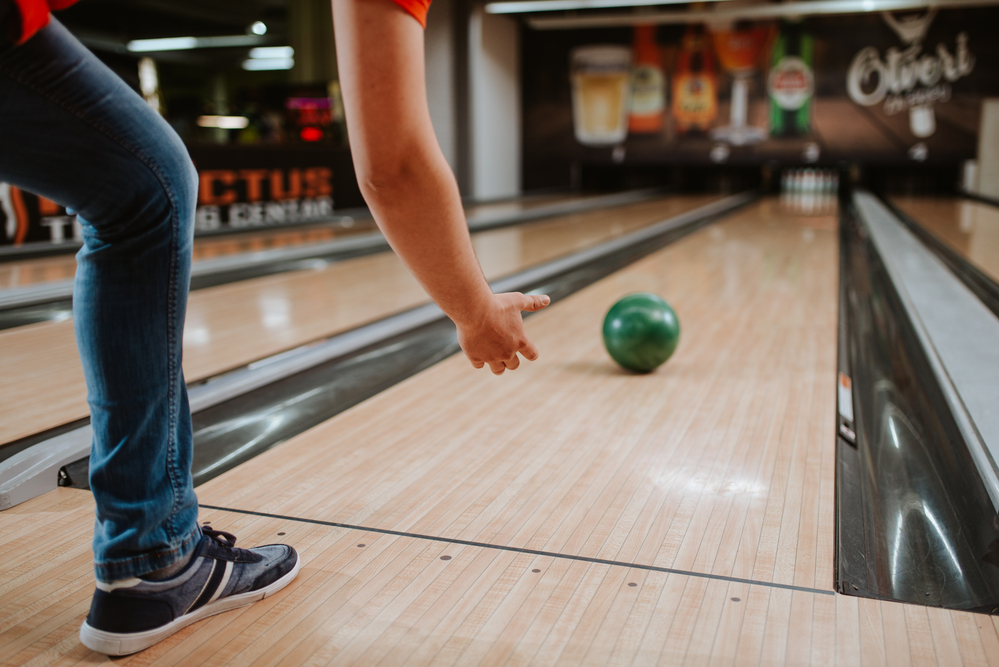
Where to Buy Bowling Balls
If you’re looking for a great place to buy bowling balls, Amazon is a great option. They have a wide selection of balls to choose from, so your chances of finding the perfect ball for you are high. They also have a great return policy, so you can return the ball if it’s not for you.
If you need to go to a brick and mortar, always visit your local pro shop and see what they have in stock.
Top Five Symmetrical Balls
Every year, bowling ball manufacturers produce better and more sophisticated symmetrical balls. Here is a selection of the most popular, top-rated symmetrical bowling balls for sale:
- Brunswick Rhino Red Black Gold Pearl Bowling Ball: This bowling ball’s core is symmetrical, but the coverstock is reactive, so you don’t have to sacrifice hooking potential for predictability. This ball produces consistent reactions while gliding down the lane. You might find this ball at your local pro shop, or you can get one online for a little over $100. The ball comes pre-drilled in 5 different weights.Bowling for Beginners may receive compensation if you make a purchase using this link, at no additional cost to you.
- Storm Phaze III Bowling Ball: This ball was designed to perform at the highest possible level with the brand’s famous “Velocity Core”. It’s the go-to ball for many pros. While the price comes in at around $140+, the rave reviews are just enough to justify the price tag.Bowling for Beginners may receive compensation if you make a purchase using this link, at no additional cost to you.
- Storm Phase II Bowling Ball: This is a symmetrical ball with a reactive coverstock for considerable hook potential. You don’t often see a review average of 4.8 out of 5 stars on Amazon, but this ball has earned it. Reviews state that, overall, this is a great ball. It handles dry to medium-heavy oil very well.Bowling for Beginners may receive compensation if you make a purchase using this link, at no additional cost to you.
- Brunswick Tzone Deep Space Bowling Ball: This ball has a symmetrical core but very little hook potential due to its plastic coverstock. A bestseller on Amazon and other bowling supply sites, this ball is reviewed as being a great one for straight bowlers, although more experienced players have found this ball to be a great addition to their game. This ball runs on the more affordable side, topping out at around $70, depending on the size and color you order.Bowling for Beginners may receive compensation if you make a purchase using this link, at no additional cost to you.
- 900 Global Zen Bowling Ball: The core of this ball is Meditate Symmetric and covered in a pearl coverstock. It gives you high performance with the ability to open angles in medium to heavy oil. People love this bowling ball for its versatility and ability to handle most lane conditions.Bowling for Beginners may receive compensation if you make a purchase using this link, at no additional cost to you.
Top Five Asymmetrical Balls
While symmetrical bowling balls are the most popular type for beginners, there are some great asymmetrical balls on the market you should know about. Here are five of the top options available on Amazon:
- Storm Proton Physix Bowling Ball: This bowling ball hooks on any oil-heavy lane condition you might come across. With 4.8 stars out of five from 262 reviews, you can’t get much better than that! The price of this one runs anywhere from $175 to $200.Bowling for Beginners may receive compensation if you make a purchase using this link, at no additional cost to you.
- . Hammer Black Widow Urethane Bowling Ball: Hammer took everything bowlers loved about their last few balls and combined them in this one! The asymmetrical core offers bowlers a way to maximize their hook, regardless of the lane condition. This ball comes in at around $126, making it a reasonably priced addition to any bowler’s equipment stash.Bowling for Beginners may receive compensation if you make a purchase using this link, at no additional cost to you.
- Radical the Spy Bowling Ball: This ball's Incognito core and textured polyester coverstock give the ball loads of kick as it sails down the lane. It also has an attractive exterior. At close to $105, this ball is well worth the money; you’ll agree when you see the product reviews.Bowling for Beginners may receive compensation if you make a purchase using this link, at no additional cost to you.
- Brunswick Quantum Evo Solid Bowling Ball: The Quantum series is famous for its mushroom-shaped core. The brand’s engineers have modified that legendary mushroomed core so that the ball will have better adhesion, longevity, and hitting power. This new design combines the better-performing core with an Evolution Reactive coverstock for more control and increased energy. Depending on the ball you order, you could pay anywhere from $175 to $200+.Bowling for Beginners may receive compensation if you make a purchase using this link, at no additional cost to you.
- Track Kinetic Black Ice Bowling Ball: Track Bowling already has a great bowling ball line-up, but that doesn’t stop them from working to meet the needs of every type of bowler. The Black Ice ball has the same core fans love and has relied on for years to get the most out of their throw, but this model is fitted with the Quick Response cover for better movement. This ball can range from $135 up, so shop around for the right one for you.Bowling for Beginners may receive compensation if you make a purchase using this link, at no additional cost to you.
Do You Need to Get Your Symmetrical or Asymmetrical Ball Drilled?
If you’ve found the perfect bowling ball, congrats! The next step is to get it drilled. This process involves creating holes in the ball so that it fits your hand perfectly.
Most bowling balls come undrilled, so you’ll need to take it to a pro shop to have it done. At the pro shop, they’ll ask you to try out a few different finger and thumb sizes to find the perfect fit. Once you’ve found your ideal size, they’ll drill the holes in the ball and insert the plugs.
Drilling the ball is an important step, as it ensures that you’ll be able to grip the ball correctly and bowl with maximum power and accuracy. Symmetrical drilled balls have smooth, controllable motion.
Could You Use Both Symmetrical and Asymmetrical Bowling Balls?
There’s no rule that says you can only use one type of bowling ball. In fact, many bowlers like to have a symmetrical ball for dry lanes and an asymmetrical ball for oilier conditions.
The good thing is that there are so many options available to customize your experience and help you (or your child) bowl the best game possible. So, if you’re interested in trying out both ball types, don’t be afraid to experiment and find the perfect fit for you.

When to Seek Help With Ball Selection
Whenever you’re feeling unsure about your bowling ball selection, it’s always a good idea to ask for help from a certified bowling pro. These experts can help you select the perfect ball based on your bowling style, lane conditions, and more. Don’t be afraid to ask for help when it comes to something as important as your bowling ball – after all, your ball can make a lot of difference in your game.
Not everyone knows a bowling pro. Thankfully, you can always talk with your fellow bowler at your local pro shop. They'll usually be more than happy to assist you.
Your Ball Won’t Instantly Make You a Pro
We'd be remiss if we didn't touch on a popular myth about bowling balls: that a certain ball will immediately make you a great bowler.
This simply isn't true. While a given ball can certainly help you bowl better, it won't do all the work for you. You still need to put in practice to hone your skills and perfect your technique if you want to be a great bowler.
The bottom line is this: having a compatible bowling ball is just one part of the equation. You also need to have the skill and dedication to bowl well.
Related Articles
- Bowling Ball Core and Bowling Ball Core Types
- Inside a Bowling Ball Cut In Half
- How Heavy Is a Bowling Pin
As you can see, there are some major differences between symmetrical and asymmetrical bowling balls. And we hope that we've illuminated them sufficiently and helped you decide which one is best for you.
Just remember, the most important thing is to have fun and enjoy the game. So, whichever type of ball you choose, make sure that it's the one that you're most comfortable with. Good luck!
Kira Byrd, a Certified Fraud Examiner, holds a B.S. in Accounting from the University of Alabama at Birmingham. With a passion for bowling from her childhood, Kira has poured her expertise and personal experiences into creating and nurturing Bowling For Beginners. Kira's mission is to meet new bowlers where they are and guide them toward consistently achieving higher scores. With a focus on skill development and strategic techniques, she empowers readers to take control of their game and unlock their true potential.
Bowling For Beginners embodies strict editorial integrity, ensuring reliable and unbiased information. Kira's commitment to delivering valuable insights and practical strategies is reflected in every article. Here's an explanation of our editorial policy and how we get money.

